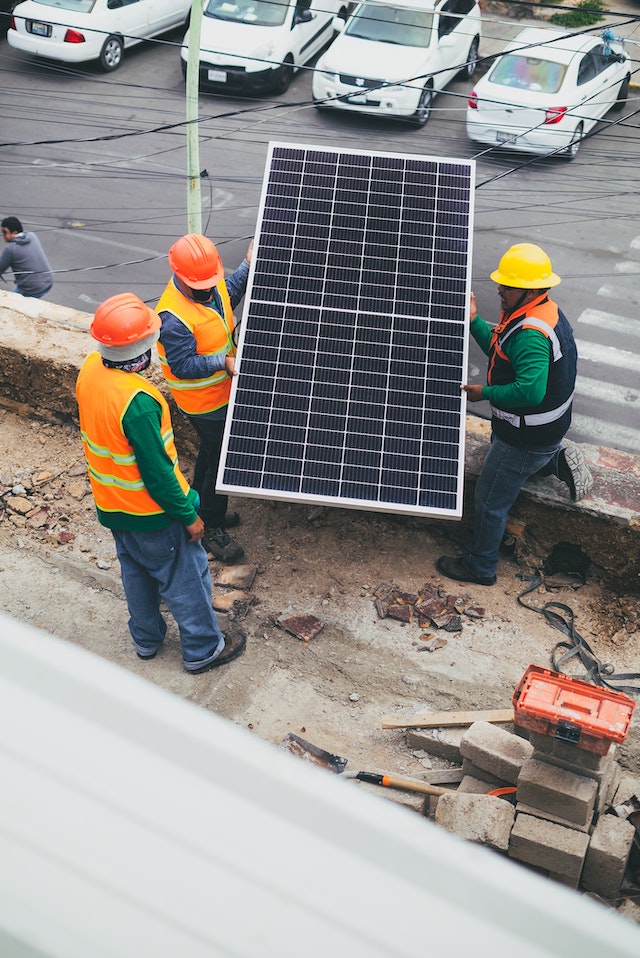Solar panels have become increasingly popular in recent years due to their environmentally friendly nature, ability to reduce energy costs, and continuous technological advancements. However, many misconceptions still surround solar energy and solar panels, which can deter potential users. This blog post aims to debunk some of the most common solar panel myths, shedding light on the truth about solar power and helping you make a well-informed decision when considering solar panel installation.
Myth #1: Solar panels don’t work in cold, cloudy climates
It’s a common misconception that solar panels only function effectively in sunny, warm climates. In reality, solar panels can work efficiently in cold, cloudy climates as well. Solar panels convert sunlight into energy, and they can still produce electricity in overcast conditions. In fact, cooler temperatures can actually increase the efficiency of solar panels, as excessive heat can cause the panel’s performance to decrease.
Myth #2: Solar panels require constant maintenance
Many people believe that solar panels demand frequent and time-consuming maintenance. Contrary to this belief, solar panels require minimal maintenance, primarily because they have no moving parts. It is generally recommended to clean the panels occasionally to remove any dirt, dust, or debris that could obstruct sunlight, but in many cases, rain can effectively clean the panels. In most situations, an annual professional inspection and cleaning is sufficient to maintain optimal performance.
Myth #3: Solar panels will damage your roof
A well-installed solar panel system should not cause any damage to your roof. Professional solar installers are trained to ensure that the mounting system is securely attached and that the roof is properly protected. Additionally, solar panels can actually protect the roof from the elements by providing a barrier against rain, snow, and UV radiation. In many cases, having solar panels installed can extend the life of your roof.
Myth #4: Solar energy is too expensive
While the initial cost of a solar panel system can be significant, solar energy has become more affordable in recent years due to advancements in technology, increased production, and various financial incentives. Many countries offer tax credits, rebates, and other incentives to help offset the initial cost of solar panel installation.
Moreover, solar panels can significantly reduce or eliminate monthly electricity bills, allowing you to save money in the long run. Additionally, solar energy systems can increase your property’s value, making it a wise investment.
Myth #5: Solar panels will make your home unsellable
On the contrary, solar panels can increase the value of your home and make it more appealing to potential buyers. Many homebuyers are attracted to the prospect of lower or nonexistent energy bills, as well as the environmental benefits of solar power. A study by the U.S. Department of Energy’s Lawrence Berkeley National Laboratory found that solar panels could add significant value to a home, depending on the size of the solar system installed.
Myth #6: Solar power is not reliable
Solar power is often criticized for being an unreliable source of energy due to its dependence on sunlight. However, solar power has proven to be a reliable source of energy when paired with energy storage systems such as batteries. These systems can store excess energy produced during the day for use when the sun is not shining, like at night or during cloudy weather.
Additionally, many grid-connected solar systems use net metering, allowing users to draw power from the grid when their solar panels are not producing enough energy. This further ensures that solar power users always have access to a reliable source of electricity.
Myth #7: Solar panels are not environmentally friendly due to their manufacturing process
While it is true that the manufacturing process for solar panels can produce some emissions and consume energy, the environmental impact of solar panels is significantly lower
than that of fossil fuel-based energy sources. A study published in the journal Nature Energy found that the carbon footprint of solar panels has decreased dramatically in recent years, with solar power now having one of the lowest lifecycle greenhouse gas emissions of any electricity generation technology.
In fact, most solar panels can offset their own carbon footprint within just a few years of operation. Furthermore, as the solar industry continues to innovate, it is expected that the environmental impact of solar panel production will decrease even further.
Myth #8: Solar power is a niche market that won’t make a difference
Solar power is no longer a niche market but has become a significant player in the global energy sector. According to the International Energy Agency (IEA), solar power is the fastest-growing source of new energy worldwide. The IEA’s World Energy Outlook 2021 report projected that solar power could become the dominant source of electricity generation globally by 2050, accounting for almost 50% of total installed capacity.
This rapid growth of solar power is driven by its numerous benefits, including reduced dependence on fossil fuels, lower greenhouse gas emissions, and job creation in the renewable energy sector. Solar power is increasingly recognized as an essential component of a sustainable, low-carbon future.
Solar power has come a long way since its early days, and misconceptions about its efficiency, cost, and environmental impact have become outdated. By debunking these myths, we hope to encourage more individuals, businesses, and governments to consider solar power as a viable, sustainable, and cost-effective energy solution.
As the world strives to transition to cleaner, renewable energy sources, it is essential to recognize the incredible potential of solar power. Solar panels offer numerous benefits, including reduced energy bills, increased property value, and a lower carbon footprint. Embracing solar energy is a significant step towards a greener, more sustainable future for all.
